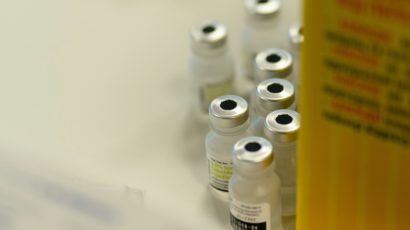Posted by Dr Michelle Wright
Heat Exhaustion and Heat Stroke
How can we avoid getting heat exhaustion and heat stroke and how do we treat it if we do succumb? Dr Michelle explains all in this week’s podcast for World Radio Switzerland.
Normally the body responds to high temperatures by dilating blood vessels in the skin to help lose heat through the skin, and also by sweating. Mechanisms are in place so that when the core body temperature is hotter than the skin temperature, this temperature gradient promotes heat loss through the skin.
However, if there’s a high ambient temperature especially if there’s also high humidity, then the temperature gradient between the body core and the skin is reduced and the body’s cooling mechanism is affected – essentially, the body’s ability to regulate heat can start to malfunction.
Throw in some physical exercise to the equation – which also causes a rise in body temperature – and the risk of heat-related illness increases further.
The people most at risk from the effects of the heat are the elderly, particularly those with chronic illnesses, babies and young children, and pregnant women. As well as people who are working outside in the heat.
Heat exhaustion
This is usually the first heat-related problem that a person will experience. It happens when body temperature rises to 38 degrees C instead of being the usual 37 degrees.
The person will start to sweat excessively and lose water and body salts because of this.
They can look pale, feel sick or start vomiting, not feel like eating and their pulse can speed up, as well as their breathing.
Salt loss can lead to cramps in the arms and legs and also the abdomen. They will feel hot to touch but may actually be complaining of feeling cold.
In terms of first aid in this situation, you need to get the person to a cool place, take off any unnecessary clothing and lie them down. And give them lots of fluids to help them re-hydrate – things like isotonic drinks are best as they also help to replace body salts.
And you should seek medical help for the person. What you don’t want is for heat stroke to develop.
Heat stroke
This is when the body temperature rises to 40 degrees C and temperature regulation has completely failed. The person’s sweating mechanism is no longer working, and it’s a medical emergency.
Signs and symptoms to look out for that could indicate heat stroke include dizziness and confusion, a headache, nausea and vomiting, hot dry skin – sweating has stopped – and the person’s conscious level can start to drop off. They may ultimately lose consciousness and they may have a seizure.
Again, important first aid involves moving the person to a cool, shaded place. And you need to call 144 for an ambulance.
Whilst waiting for the ambulance, you should cool the person as best you can – remove outer clothing, cover them in a cold, wet sheet and keep dousing the sheet with cool water until the ambulance arrives.
This all sounds a bit scary…and as always, prevention is better than cure…
Listen on to discover Dr Michelle’s top tips for thriving in the hot summer! Attending a first aid course will help you be prepared for any medical emergency.





